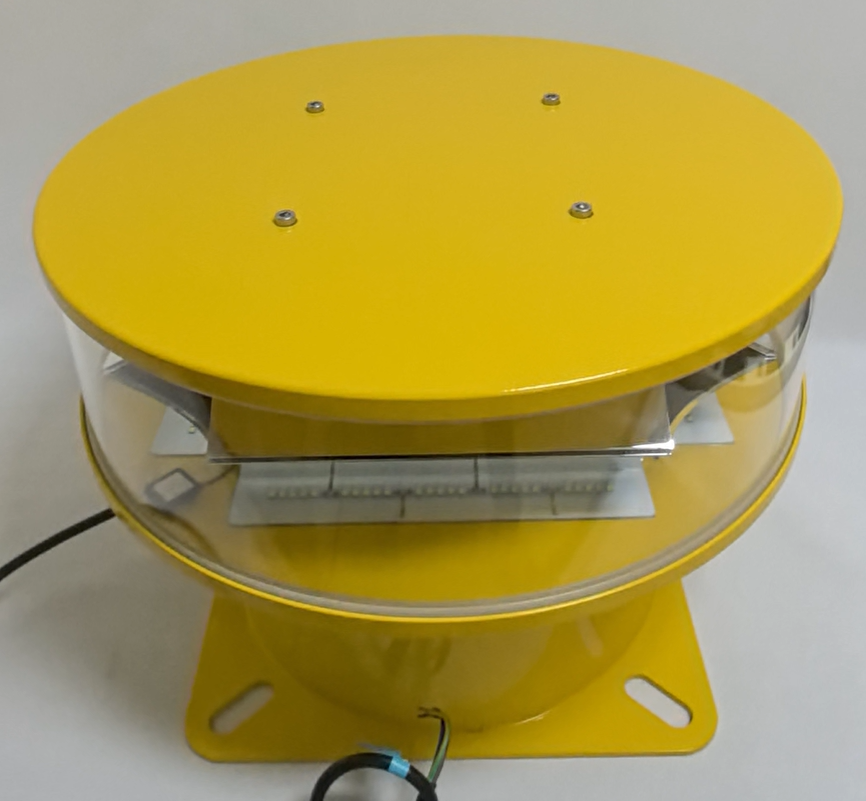Guiding the Skies: The Essential Function of Aviation Obstruction Lights
As air traffic continues to grow and urban landscapes expand upward, the need for effective aviation obstruction lights has never been more critical. These specialized lighting systems are designed to mark tall structures—such as towers, wind farms, and skyscrapers—ensuring they remain visible to pilots and preventing potential collisions.
This article examines the purpose, types, regulations, and emerging technologies in aviation obstruction lighting, emphasizing their role in modern airspace safety.
The Importance of Aviation Obstruction Lights
Aviation obstruction lights serve as a visual warning system, alerting pilots to man-made and natural obstacles that could pose a hazard during flight. Whether due to low visibility at night, fog, or heavy rain, these lights provide a crucial reference point, helping aircraft maintain safe altitudes and trajectories.

Regulatory bodies worldwide mandate their installation on structures that exceed specific height thresholds, ensuring standardized visibility across different regions. Without these lights, the risk of mid-air collisions and structural impacts would increase significantly.
| Aviation Obstruction Lights |
Types of Aviation Obstruction Lights
Different structures require varying levels of visibility, leading to the development of multiple obstruction light categories:
1. Low-Intensity Red Lights (LIRL)
Used for structures under 150 feet (45 meters).
Emit a steady or flashing red glow.
Common on small buildings, cranes, and power lines.
| Aviation Obstruction Light |
2. Medium-Intensity Red Lights (MIRL)
Applied to structures between 150 and 500 feet (45–152 meters).
Brighter than LIRL, often with a flashing pattern.
Frequently installed on telecom towers and mid-sized wind turbines.
3. High-Intensity White Strobe Lights (HIWL)
Required for structures taller than 500 feet (152 meters).
Extremely bright flashes, visible from long distances.
Used on skyscrapers, large wind farms, and broadcasting towers.
4. Dual Lighting Systems
Combine red and white lights for optimal visibility.
Useful in areas with high background light interference.
Regulatory Standards and Compliance
To maintain global aviation safety, strict guidelines govern obstruction lighting:
FAA (Federal Aviation Administration) – Defines U.S. requirements for light intensity, placement, and operation.
ICAO (International Civil Aviation Organization) – Establishes worldwide standards for obstruction marking.
IEC (International Electrotechnical Commission) – Specifies technical performance criteria.
Non-compliance can result in fines, increased accident risks, and even legal liability in the event of a collision.
Technological Innovations in Obstruction Lighting
Advancements in lighting technology have significantly improved the efficiency and reliability of aviation obstruction lights:
LED Adoption – More energy-efficient, durable, and brighter than traditional incandescent or xenon lights.
Solar-Powered Solutions – Ideal for remote or off-grid structures, reducing wiring complexity.
Smart Monitoring Systems – IoT-enabled sensors detect malfunctions and automate maintenance alerts.
Adaptive Lighting Controls – Adjust brightness based on ambient light and weather conditions to minimize energy waste.
These innovations enhance safety while lowering operational costs and environmental impact.
Challenges and Future Developments
Despite their effectiveness, aviation obstruction lights face several challenges:
Light Pollution Concerns – Residents near tall structures often complain about excessive brightness.
Maintenance in Harsh Environments – Extreme weather can damage lighting systems, requiring robust designs.
Drone Airspace Integration – As drone usage increases, obstruction lights may need to incorporate UAV detection.
Future trends may include:
More Discreet Lighting Designs – Reducing urban light pollution while maintaining safety.
AI-Powered Predictive Maintenance – Using machine learning to anticipate failures before they occur.
Enhanced Synchronization – Coordinated flashing patterns to improve pilot recognition.
Aviation obstruction lights are indispensable for safe air navigation, preventing collisions between aircraft and tall structures. As technology evolves, these systems will become even more efficient, reliable, and environmentally friendly. With increasing urbanization and air traffic, their role in aviation safety will only grow more vital.
